Introduction
Design
Front
{{section_header}}{{section.name}}{{/section_header}}

Back
{{section_header}}{{section.name}}{{/section_header}}

Left
{{section_header}}{{section.name}}{{/section_header}}
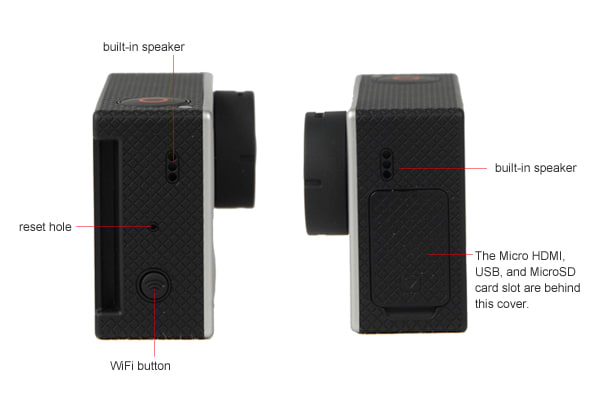
Right
{{section_header}}{{section.name}}{{/section_header}}
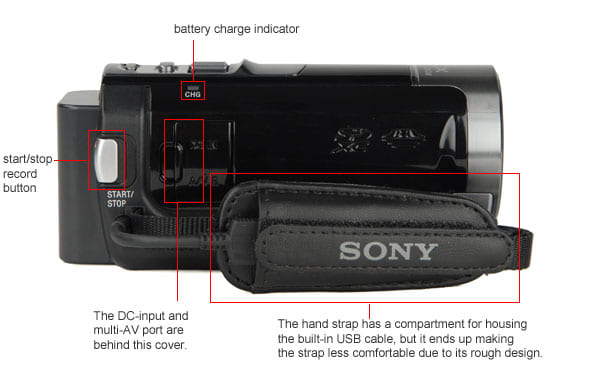
Top
{{section_header}}{{section.name}}{{/section_header}}

Bottom
{{section_header}}{{section.name}}{{/section_header}}

Size & Weight Comparison
{{section_header}}{{section.name}}{{/section_header}}
In the Box
{{section_header}}{{section.name}}{{/section_header}}

Performance
Color
{{section_header}}{{section.name}}{{/section_header}}
JVC camcorders often have the best color accuracy amongst consumer models, and the GZ-HD620 follows this trend. In bright light, the camcorder managed a color error of just 3.22 and a saturation level of 88.98%, both of which are excellent numbers. The Panasonic HDC-HS60 wasn't far behind in its own right, but the GZ-HD620 still had the best color accuracy of the camcorders we compared it to. More on how we test color.
The Color Error Map shown above tells us that the GZ-HD620 did a very good job rendering blue and red tones accurately, but the camcorder had some trouble with greens and yellows. Overall, we like the way the camcorder captured colors very much, and we seem to say that about most camcorders from JVC (the recent Picsio GC-WP10 ultracompact camcorder being one of the only exceptions). Unfortunately, the GZ-HD620 does not have any color controls or color modes, so the only sample image we can show you is from our auto mode footage (below).
All of the camcorders we compared the GZ-HD620 to (see the images below) produced pleasing colors in our bright light test. They also all had a different way of rendering certain colors. Notice how much more pink some of the tones are on the Canon HF M31's image compared to the purple-blue on the GZ-HD620. Since color quality depends more on personal preference than anything else, we urge you to check out the images below and the close-up comparisons that follow to get a better idea of how each camcorder renders colors in bright light.
{{comparison_bars title="Color Score Comparison", attribute="Color Score", xLabel="Color Score"}}
Low Light Color
{{section_header}}{{section.name}}{{/section_header}}
The JVC GZ-HD620 did a great job in all of our low light tests, and its color accuracy performance may be the most exceptional. In low light, the camcorder registered a color error of 2.95 (that's better than its color accuracy in bright light), and its saturation level was a solid 87.83%. These numbers are significantly better than the other mid-range camcorders we compared to the HD620. More on how we test low light color.
In the images below, you can see that the GZ-HD620 not only managed better color accuracy than the competition, but its colors also appeared deeper and more vivid than the other models in this comparative set. Just look at the top center red patch in the comparison images below. Notice how much redder the GZ-HD620's patch looks than the rest of the camcorders. The same goes with many of the blue patches as well.
Noise
{{section_header}}{{section.name}}{{/section_header}}
The GZ-HD620 averaged 0.5525% noise in our bright light test, and we usually consider any noise levels around 0.5% as very good. Other than the Canon HF M31, which measured just under 1% noise, the other camcorders we compared the HD620 to also did well in this test. More on how we test noise.
Usually, it is difficult to see any noise in bright light images (this changes in low light), but the crops shown above provide us with another use: determining sharpness and detail. The GZ-HD620 produced a bold image, but it wasn't quite as sharp as what we saw from the Canon HF M31. Continue to the next section of this review (Motion & Sharpness) to read more about our sharpness test.
{{comparison_bars title="Noise Score Comparison", attribute="Noise Score", xLabel="Noise Score"}}
Low Light Sensitivity
{{section_header}}{{section.name}}{{/section_header}}
The GZ-HD620 put up surprisingly good numbers in our sensitivity test, as the camcorder needed only 9 lux of light to hit 50 IRE on our waveform monitor. The other three camcorders we compared it to—the Sony HDR-XR350V, Panasonic HDC-HS60, and Canon HF M31—all needed more light than this to reach the same levels (some needed more than others; see the table and chart below). More on how we test low light sensitivity.
The Sony HDR-XR350V has a very wide angle lens, so in the table below we listed its low light sensitivity both using and not using the camcorder's optical zoom. As is the case with all camcorders, the XR350V's sensitivity is much better when no optical zoom is used. Even so, the JVC GZ-HD620 still had better low light sensitivity than the Sony and the rest of the camcorders in this set. The Canon HF M31 was a surprising disappointment in this test, but its sensitivity is much better when shooting with its PF30 and PF24 record modes.
{{comparison_bars title="Low Light Sensitivity Comparison", attribute="Low Light Sensitivity Score", xLabel="Low Light Sensitivity Score"}}
Low Light Noise
{{section_header}}{{section.name}}{{/section_header}}
Rounding out our low light tests, the GZ-HD620 averaged 1.0275% noise in our low light noise test. While this score is very good, the GZ-HD620 didn't do any better than the Sony HDR-XR350V in this test (their noise levels were statistically identical). Both the Panasonic HDC-HS60 and Canon HF M31 measured a bit more noise than the Sony and JVC, and you can see this in the crops below. More on how we test low light noise.
The only drawback of the GZ-HD620's low light performance is the fact that the camcorder lacked the ability to capture a very sharp image in low light situations. In the crops above, you can see the HD620's image is blurrier and has less detail than, say, the Canon HF M31 or Panasonic HDC-HS60. Still, the GZ-HD620's image had much less noise than those two camcorders, and its image looked very smooth with little pixelation or blockiness.
{{comparison_bars title="Low Light Noise Score Comparison", attribute="Low Light Noise Score", xLabel="Low Light Noise Score"}}
Low Light Color
{{section_header}}{{section.name}}{{/section_header}}
The JVC GZ-HD620 did a great job in all of our low light tests, and its color accuracy performance may be the most exceptional. In low light, the camcorder registered a color error of 2.95 (that's better than its color accuracy in bright light), and its saturation level was a solid 87.83%. These numbers are significantly better than the other mid-range camcorders we compared to the HD620. More on how we test low light color.
In the images below, you can see that the GZ-HD620 not only managed better color accuracy than the competition, but its colors also appeared deeper and more vivid than the other models in this comparative set. Just look at the top center red patch in the comparison images below. Notice how much redder the GZ-HD620's patch looks than the rest of the camcorders. The same goes with many of the blue patches as well.
Motion
{{section_header}}{{section.name}}{{/section_header}}
JVC camcorders often excel in capturing smooth motion video, and the GZ-HD620 definitely hits the mark. The camcorder's video in our motion test was fairly artifact-free (for a mid-range camcorder), had little blur or trailing, and no significant frequency interference issues to speak of. More on how we test motion.
Video Sharpness
{{section_header}}{{section.name}}{{/section_header}}
The JVC GZ-D620 did well on our sharpness test, producing numbers consistent with what we usually see from mid-range HD camcorders. The HD620 measured a horizontal sharpness of 800 lw/ph and a vertical sharpness of 575 lw/ph. You can look at the chart below to see how these two numbers match up to the competition, but all of these camcorders did quite well on this test. More on how we test video sharpness.
{{comparison_bars title="Video Sharpness Score Comparison", attribute="Video Sharpness Score", xLabel="Video Sharpness Score"}}
Testing Samples
{{section_header}}{{section.name}}{{/section_header}}
Usability
Ease of Use
{{section_header}}{{section.name}}{{/section_header}}
The GZ-HD620 can be a simple camcorder to use, but it is not without its quirks and frustrations. We like the camcorder's dedicated auto mode; it is simple to activate and it still lets you access the menu to adjust certain features (just not manual controls). What we don't like, however, is the ridiculously long menu on the camcorder that can make it difficult to find specific options. Every setting is grouped under the main menu and you have to dig through multiple submenus to find certain controls—some of which are placed in odd and confusing locations.
Thankfully, there is a good tool tip feature that can help you figure out what certain settings in the menu actually do. The tool tip option is simple to use and the tips are easy to read (you just press the "?" icon before selecting a menu option). The manual for the GZ-HD620 isn't full of details, but it covers most things well.
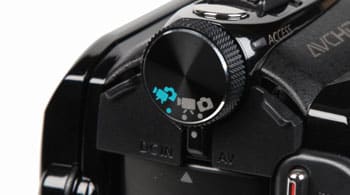
Auto Mode is confusingly called Dual Shot mode
Auto Mode
{{section_header}}{{section.name}}{{/section_header}}
The automatic controls on the GZ-HD620 work well, but the camcorder does lack advanced auto features like AF/AE tracking. We found the autofocus to work quickly and accurately on the camcorder, and we didn't notice the popping-focus issue that we saw on the JVC GZ-HM340. Auto white balance also worked effectively in most lighting conditions.
While the auto exposure was also good, we did notice it took a while for the camcorder to perform this task properly at times. This was particularly an issue when we switched from shooting very bright to very dark scenes. You can set the exposure metering mode to either "entire screen" or "spot" exposure, however, which is a good feature to have.
When the camcorder is in its dedicated auto mode, you can still access menus and make certain adjustments. What you cannot do is go into the manual controls submenu, as none of those features can be adjusted in auto mode.
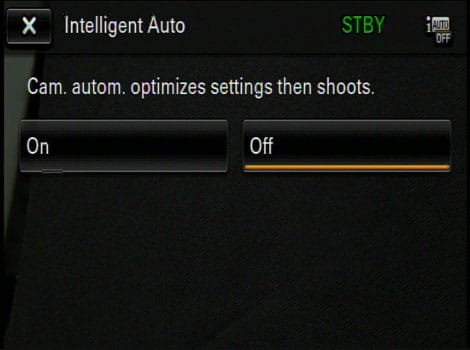
The iAuto mode button is difficult to find, but when you do find it the option for turning on the mode looks like this.
Auto Controls
{{section_header}}{{section.name}}{{/section_header}}
Exposure - Exposure adjustment is called brightness on the GZ-HD620 and it isn't too hard to set manually using the Laser Touch strip. There's only 13 increments, so it doesn't matter too much that the strip is imprecise when you use it to adjust the setting. As with all controls, you can either slide your finger along the strip to make large exposure changes, or tap it to move up or down one exposure step.
Gain - The GZ-HD620's AGC on/off control is not a manual gain feature. What it does do is allow you to turn the auto gain control (AGC) on or off. By turning the AGC off, the camcorder doesn't use any gain boost. This means your image will have less noise, but you won't be able to record a viable image unless you have plenty of light (either outdoor lighting or a very well-lit room). With AGC on, the GZ-HD620 uses its regular gain boost to increase low light sensitivity, but you can't set the gain levels manually.
There's also an AGC auto setting on the camcorder, but that just turns on an auto slow shutter in addition to the auto gain control.
Handling
{{section_header}}{{section.name}}{{/section_header}}
The GZ-HD620 has a very similar design to last year's JVC GZ-HD300. This means it is compact, has a fairly comfortable design, but also comes with one of the worst hand straps we've seen on a mid-range camcorder. The strap is barely more than a thin piece of string with some velcro glued to it to make it adjustable. You can disconnect the hand strap so that it hangs off the side of the camcorder in the form of a wrist strap if you want to, but we find this makes the GZ-HD620 a bit difficult to hold for long periods of time.


In addition to the poorly-designed hand strap, the GZ-HD620 also has a slightly uncomfortable ridge on the top of the camcorder. This ridge (perhaps it's more of a "bump") is on the camcorder because of the 120GB internal hard drive that is built into the side of the HD620. It isn't terribly uncomfortable, but you do have to wrap your hands over it and it may dig into the underside of your fingers a bit. We prefer the smooth, rounded edge that JVC offers on its flash memory camcorders (like the GZ-HM340).

The other major handling issue with the GZ-HD620 is something that is present on all of JVC's consumer camcorders, with the exception of the ultracompact Picsio line. We're talking about the Laser Touch strip, of course, and we've found the strip can be both a frustration and a benefit. What the strip is good for is scrolling through long menu lists or making big manual adjustments. What it is bad for is precise control, and by this we mean selecting a specific menu option or fine focus adjustment. Yes, you do get use to the strip after a while, but we think it is more imprecise and finicky than a touchscreen interface—and we'd much prefer the presence of a ring or dial for adjusting manual controls.

These dedicated buttons give you quick access to aperture and shutter speed controls.
Portability
{{section_header}}{{section.name}}{{/section_header}}
Despite the fact that it contains an embedded 120GB hard drive, JVC managed to keep the GZ-HD620 relatively light and compact. This is especially the case when you compare the camcorder's weight to that of the competition (see table below). The Sony HDR-XR350V is not only much heavier than the GZ-HD620, but it is also quite a bit bulkier (its hard drive is 40GB larger, however). The Panasonic HDC-HS60 has nearly the identical proportions to the GZ-HD620, but it too is also a bit heavier. The Canon HF M31 is the only camcorder in this group that does not have an internal hard drive, but it isn't any lighter because of this fact.
The GZ-HD620 is light enough to grab on the go, but it isn't as compact as the ultracompact pocket camcorders (like the Flip) that are very popular right now. Don't expect to be able to slip the HD620 in and out of your pocket with ease—it may fit (if your pockets are very spacious), but it won't be comfortable.
Battery Life
{{section_header}}{{section.name}}{{/section_header}}
The GZ-HD620 lasted for 99 minutes in our battery life test, which is just a few minutes less than the competition lasted. Anything around 100 minutes is average for a mid-range camcorder, so if you need longer performance than that you should buy some extra battery packs. The GZ-HD620 does have an open battery compartment, so you can fit in larger battery packs that should get you longer-lasting performance than the pack that comes with the camcorder. More on how we test battery life.

{{comparison_bars title="Battery Life Comparison", attribute="Battery Life Score", xLabel="minutes"}}
LCD
{{section_header}}{{section.name}}{{/section_header}}
The LCD on the GZ-HD620 is the standard 2.7-inch variety and the camcorder has no viewfinder (this is the norm for a mid-range model). The resolution of the LCD is a bit low compared to what most other manufacturers offer, but this doesn't have a huge impact on recording.
JVC remains one of the few manufacturers to hold out on implementing a touchscreen interface on its camcorder's LCDs. Instead, models like the GZ-HD620 offer JVC's Laser Touch Strip and touch-sensitive buttons along the base of the LCD panel. The Laser Touch is similar to using a touchscreen in some ways, and it shares some of the same frustrating tendencies, but it allows you to keep the LCD free of fingerprints.
Stabilization
{{section_header}}{{section.name}}{{/section_header}}
The GZ-HD620 has a digital image stabilization (DIS) system that offers two settings (normal and active). DIS is usually not favored over optical image stabilization (OIS) systems because DIS can result in image degradation when used. Nevertheless, the DIS implemented on the HD620 was reasonably effective (especially compared to the poor OIS on the Canon HF M31). In our low shake test, the GZ-HD620 was able to reduce 19% of the shake using its Active Mode DIS option. With our test set to high shake, the camcorder reduced 31% of the shake with the same setting. More on how we test stabilization.
The GZ-HD620 was slightly less effective reducing the shake with its standard DIS mode (18% in low shake, 17% in high shake) than with its Active Mode. If you're really concerned about stabilization performance, though, we have to recommend the Sony HDR-XR350V or the Panasonic HDC-HS60 over the GZ-HD620. Both of those camcorders—particularly the Sony—did much better in our stabilization test, and they offer optical stabilization systems that don't degrade image quality.
Manual Focus
{{section_header}}{{section.name}}{{/section_header}}
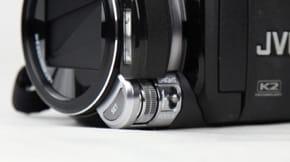
The adjustment dial makes accurate focus adjustments easy.
Manual Exposure
{{section_header}}{{section.name}}{{/section_header}}
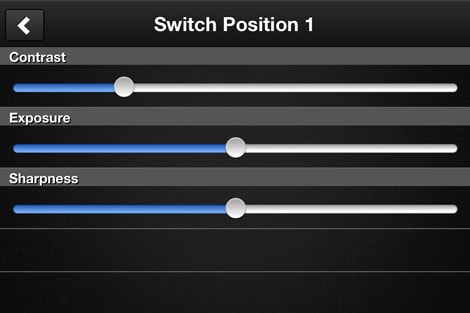
The manual exposure controls are only found on the Contour app, not on the camcorder itself.
Miscellaneous Controls
{{section_header}}{{section.name}}{{/section_header}}
x.v. Color
Allows for recording in the expanded xvYCC color gamut. You'll only be able to see a difference if you view the footage on an xvYCC compatible television.
Tele Macro
Changes the focal range on the camcorder so you can shoot close subjects in focus. You'll only notice a difference if you're fully zoomed in (or nearly fully zoomed in) on the subject you're trying to record. If you can actually move the camcorder close to your subject, then you don't have to use Tele Macro for it to be in focus.
Auto Controls
{{section_header}}{{section.name}}{{/section_header}}
Exposure - Exposure adjustment is called brightness on the GZ-HD620 and it isn't too hard to set manually using the Laser Touch strip. There's only 13 increments, so it doesn't matter too much that the strip is imprecise when you use it to adjust the setting. As with all controls, you can either slide your finger along the strip to make large exposure changes, or tap it to move up or down one exposure step.
Gain - The GZ-HD620's AGC on/off control is not a manual gain feature. What it does do is allow you to turn the auto gain control (AGC) on or off. By turning the AGC off, the camcorder doesn't use any gain boost. This means your image will have less noise, but you won't be able to record a viable image unless you have plenty of light (either outdoor lighting or a very well-lit room). With AGC on, the GZ-HD620 uses its regular gain boost to increase low light sensitivity, but you can't set the gain levels manually.
There's also an AGC auto setting on the camcorder, but that just turns on an auto slow shutter in addition to the auto gain control.
Audio Controls
{{section_header}}{{section.name}}{{/section_header}}
The JVC GZ-HD620 is limited when it comes to audio features. The camcorder does have a built-in stereo microphone, though, and a wind cut option that can be enabled for this mic. The mic is decently placed beneath the lens, and we never found our fingers accidentally wandering over to rub against the mic while we were recording. If you want manual audio controls, or if you need access to mic/headphone jacks, you should look to the Canon HF M31—it is one of the few mid-range camcorders to offer those features.
Editing
{{section_header}}{{section.name}}{{/section_header}}
The GZ-HD620 comes with Everio Media Browser HD software (version 2.0.6), which is the same software that ships with all 2010 JVC Everio camcorders. For an overview of the software that ships with this and other camcorders, see our article: Video Editing Software For Your Camcorder{{product.brand.name}}-Included-Software.htm.
Along with the Everio Media Browser HD software, the GZ-HD620 also has a few internal editing options for doing things like trimming clips, adding faders, or creating playlists.
Features
Compression
{{section_header}}{{section.name}}{{/section_header}}
Like most consumer HD camcorders, the GZ-HD620 uses the AVCHD compression system, which is based on the MPEG-4 codec. The standard line about AVCHD is that it produces high-quality HD video, but the clips can be very difficult to edit due to their large data size. If you plan on doing lots of editing with the footage you shoot on the HD620, make sure you have a powerful computer that is up to the task.
The GZ-HD620 has four different quality settings for recording HD video, but there are no SD (standard definition) record modes available. Each of the HD quality options records using the AVCHD compression system and capture at a 1920 x 1080 resolution. Read more about the advantages and disadvantages of various high definition compression types.
Media
{{section_header}}{{section.name}}{{/section_header}}
The GZ-HD620 has two options as to what kind of media you want to record your video and photos on. The first, is a large 120GB internal hard drive that cannot be removed, while the second is a MicroSD card slot on the bottom of the camcorder. The 120GB hard drive is great for certain kinds of people, particularly those who don't want to worry about buying more memory cards... but hard drives involve moving parts so the data stored on them can become corrupted if you, say, drop the camcorder
We usually see SD/SDHC memory card slots on consumer camcorders, so the MicroSD card slot is a bit surprising on the GZ-HD620. The different memory cards work the exact same way, but MicroSD cards are a lot more uncommon than SD/SDHC, so you may have a difficult time locating extra memory cards if you're in a pinch. The table below lists the approximate record times for the GZ-HD620 and its media options. Read more about the advantages and disadvantages of various media types.

Slow Motion Modes
Still Features
{{section_header}}{{section.name}}{{/section_header}}
For a camcorder without impressive still image specs, the GZ-HD620 has quite a few still features. The camcorder has three image size options (1920 x 1080, 1440 x 1080, and 640 x 480), two image quality settings, a self-timer, and a continual shooting mode. There's no flash on the camcorder, but the video light can be used in photo mode. You can also take photos while recording vide on the GZ-HD620 as well as capture still images from video during playback.
The self-timer can be set as a 2-second or 10-second timer, and it has an additional option for snapping a photo when a new face is detected within the frame. A great feature, when it works correctly, for making sure you get the whole family in the group photo.
The GZ-HD620 did worse on our still color test than the camcorder did in our video color accuracy testing. In its photos, the camcorder registered a color error of 4.38 and a saturation level of 111.1%. Both of these numbers are a bit too high for our liking, and we expected to see a more accurate color score from the camcorder (considering it did so well in our video color testing).
Despite the colors not being very accurate according to our testing software, we still liked the way the GZ-HD620's still images looked. Colors definitely popped and were more vibrant than the competition, which you should be able to see by looking at the sample images below.
The GZ-HD620's noise levels in our still image testing weren't bad, coming in at 0.63%. This isn't much different than the amount of noise we measured on the camcorder's bright light video images and it is a whole lot less noise than we saw from the competition.
Unfortunately, the GZ-HD620 flunked our still sharpness test. The camcorder measured a horizontal sharpness of just 798 lw/ph with 23.8% oversharpening and a corresponding vertical sharpness of 446 lw/ph with 25.2% undersharpening. These numbers are roughly half that of what we measured on the competition. Still, none of these camcorders were able to capture still images with as much detail or sharpness that a good digital camera would be capable of.
Lens & Imaging System
{{section_header}}{{section.name}}{{/section_header}}

The GZ-HD620 has a 1/4-inch CMOS sensor, which puts it solidly in the mid-range category of consumer camcorders (the Canon HF M31, Panasonic HDC-HS60, and Sony HDR-XR350V all have similarly-sized CMOS chips). The camcorder's 30x optical zoom, however, is a bit longer than we're accustomed to seeing from a mid-range model. So, if you like going wild with your zooms, the GZ-HD620 does have an advantage over the competition there.
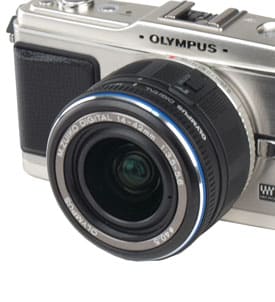
LCD
{{section_header}}{{section.name}}{{/section_header}}
The LCD on the GZ-HD620 is the standard 2.7-inch variety and the camcorder has no viewfinder (this is the norm for a mid-range model). The resolution of the LCD is a bit low compared to what most other manufacturers offer, but this doesn't have a huge impact on recording.
JVC remains one of the few manufacturers to hold out on implementing a touchscreen interface on its camcorder's LCDs. Instead, models like the GZ-HD620 offer JVC's Laser Touch Strip and touch-sensitive buttons along the base of the LCD panel. The Laser Touch is similar to using a touchscreen in some ways, and it shares some of the same frustrating tendencies, but it allows you to keep the LCD free of fingerprints.
Connectivity
{{section_header}}{{section.name}}{{/section_header}}
The GZ-HD620 doesn't have a lot of connectivity options, but it has all the necessary ports for connecting your camcorder to an HDTV, standard def TV, or computer. On the inside of the LCD cavity, near the base of the camcorder, you'll find three video output terminals: HDMI, Component-out, and AV-out. These three ports allow you to connect the GZ-HD620 to a television so you can watch your recorded videos on a big screen. The HDMI and Component terminals offer HD output, while the AV port sends out a standard definition signal. Unfortunately, none of these ports are protected by covers, which we don't ever like to see (although the LCD panel does cover them when it is closed).
Around the back (above the battery compartment) are two more ports covered by a cheap piece of plastic that is tethered to the top of the camcorder. These two ports are the USB terminal, for connecting to a computer, and the DC-input for providing power or charging the battery.
Lastly, there is the camcorder's MicroSD card slot, which is found on the bottom and is covered by a flip-open door. We like this port cover, but we don't like the fact that the card slot is on the bottom of the camcorder. This makes the slot difficult to locate and it is impossible to insert or remove cards if the GZ-HD620 is mounted on a tripod. We also hate that JVC uses MicroSD cards on the HD620 in lieu of the far more popular SD/SDHC card slot. MicroSD cards are harder to find and easier to lose (because of their smaller size) than the traditional SD or SDHC memory cards.
Media
{{section_header}}{{section.name}}{{/section_header}}
The GZ-HD620 has two options as to what kind of media you want to record your video and photos on. The first, is a large 120GB internal hard drive that cannot be removed, while the second is a MicroSD card slot on the bottom of the camcorder. The 120GB hard drive is great for certain kinds of people, particularly those who don't want to worry about buying more memory cards... but hard drives involve moving parts so the data stored on them can become corrupted if you, say, drop the camcorder
We usually see SD/SDHC memory card slots on consumer camcorders, so the MicroSD card slot is a bit surprising on the GZ-HD620. The different memory cards work the exact same way, but MicroSD cards are a lot more uncommon than SD/SDHC, so you may have a difficult time locating extra memory cards if you're in a pinch. The table below lists the approximate record times for the GZ-HD620 and its media options. Read more about the advantages and disadvantages of various media types.

Still Features
{{section_header}}{{section.name}}{{/section_header}}
For a camcorder without impressive still image specs, the GZ-HD620 has quite a few still features. The camcorder has three image size options (1920 x 1080, 1440 x 1080, and 640 x 480), two image quality settings, a self-timer, and a continual shooting mode. There's no flash on the camcorder, but the video light can be used in photo mode. You can also take photos while recording vide on the GZ-HD620 as well as capture still images from video during playback.
The self-timer can be set as a 2-second or 10-second timer, and it has an additional option for snapping a photo when a new face is detected within the frame. A great feature, when it works correctly, for making sure you get the whole family in the group photo.
The GZ-HD620 did worse on our still color test than the camcorder did in our video color accuracy testing. In its photos, the camcorder registered a color error of 4.38 and a saturation level of 111.1%. Both of these numbers are a bit too high for our liking, and we expected to see a more accurate color score from the camcorder (considering it did so well in our video color testing).
Despite the colors not being very accurate according to our testing software, we still liked the way the GZ-HD620's still images looked. Colors definitely popped and were more vibrant than the competition, which you should be able to see by looking at the sample images below.
The GZ-HD620's noise levels in our still image testing weren't bad, coming in at 0.63%. This isn't much different than the amount of noise we measured on the camcorder's bright light video images and it is a whole lot less noise than we saw from the competition.
Unfortunately, the GZ-HD620 flunked our still sharpness test. The camcorder measured a horizontal sharpness of just 798 lw/ph with 23.8% oversharpening and a corresponding vertical sharpness of 446 lw/ph with 25.2% undersharpening. These numbers are roughly half that of what we measured on the competition. Still, none of these camcorders were able to capture still images with as much detail or sharpness that a good digital camera would be capable of.
Other Features
{{section_header}}{{section.name}}{{/section_header}}
Time Lapse Recording
Lets you take short video clips a specific intervals over a long period of time. Works best when used for things like capturing a flower in bloom or clouds moving over the sky. Available intervals include: 1, 2, 5, 10, 20, 40, and 80 seconds.
Auto Record
This new feature is found on numerous JVC models from 2010 and it could be described as a "Nanny Cam" in addition to an automatic recorder. Basically, with the feature turned on, you can sit the GZ-HD620 down and it will automatically begin recording when a new subject enters in the frame. Use it for hidden recording (hence, the Nanny Cam) or for self-recording.
Effects
The camcorder has a variety of digital effects including a sepia mode and a black & white setting. There are also classic film and strobe options, both of which utilize slow shutter speeds to create a choppy motion effect.
Video Light
The camcorder has a small video light that isn't very effective. You can turn the light on manually, or you can set it to automatically turn on when you're recording in a dark location.
Register Event
A feature found on most JVC camcorders that allows you to classify your footage by applying it with a specific label. The label options are: Vacation, Holiday, Sports, Anniversary, Congratulations, Baby, Son, Daughter, Birthday, and Graduation. (Three events are available for each label.)
Drop Detection
If you move, jerk, or drop the camcorder suddenly, the GZ-HD620 may stop recording if Drop Detection is enabled. This feature is meant to keep the hard drive from becoming scratched or damaged because of a sudden movement.
Panasonic HDC-HS60 Comparison
There's a lot of competition in the mid-range HD camcorder market, and, with it's $999 MSRP, the Sony HDR-X350V represents one of the more expensive options out there. We don't think the Sony is quite worth all this cash, but that doesn't mean it isn't a solid camcorder. It has a slightly larger intern hard drive than the GZ-HD620 (160GB vs. 120GB) and it has a versatile memory card slot that works with any SD-type cards as well as Memory Stick PRO Duo cards—a far more valuable feature than the HD620's MicroSD card slot.
As far as performance goes, the Sony was no match for the JVC GZ-HD620 in most of our tests, although it did do better in noise and stabilization performance. The HDR-XR350V is also bulkier and heavier than the JVC, but Sony counters this fact by providing a much better hand strap and more durable body design on its camcorder. Another huge advantage of the Sony HDR-XR350V is that the camcorder offers standard definition record modes in addition to its HD settings.
To be frank, the GZ-HD620 is the better camcorder here in terms of value and performance. It does have a cheaper design and feel, but that's probably the main reason it costs $350 less than the Sony. We think $350 is a good sum of money, and if you're shopping for a mid-range model, it makes sense to stay away from the Sony HDR-XR350V unless you can find it for a bargain price.
Canon Vixia HF M31 Comparison
The Panasonic HDC-HS60 is the prize of the mid-range HD camcorder market, but the JVC GZ-HD620 is not very far behind. Both camcorders have sub-$700 price tags, 120GB internal hard drives, and 1/4-inch CMOS sensors that deliver sharp imagery and capture good motion in bright light. The reasons we like the HDC-HS60 better are its optical image stabilization, advanced set of manual controls, and more comfortable design.
The JVC GZ-HD620 does have a few advantages of its own: a 30x optical zoom (5x longer than the Panasonic's), better numbers in our low light performance testing, and it retails for $50 less than the HDC-HS60. Those three things aren't quite enough for us to recommend it over the solid Panasonic HDC-HS60, however, but we're impressed by how well the GZ-HD620 stands up to the competition.
COMP 3
The Canon HF M31 is the only comparison model in this group that does not record to an internal hard drive. Instead, it has 32GB of internal flash memory along with its SD/SDHC memory card slot. This means the camcorder can store a lot less video internally, but you don't have to worry about its flash memory becoming corrupted as easily (flash memory has no moving parts, unlike internal hard drives). The Canon HF M31 retails for $799, which puts it in the middle of the pack amongst mid-range HD camcorders.
The Canon HF M31 has a number of other features that allow it to stand out from the crowd as well. These include alternate frame rate options (PF24 and PF30), top-notch motion and sharpness performance, and a very sleek design. The M31's touchscreen is one of the most responsive touch-based interfaces we've seen and the camcorder's hand strap is plush and comfortable. Of course, the camcorder is also a bit of a downer in low light and its multiple image stabilization options did not fare well in our testing.
We like the HF M31, we really do, and there are quite a few reasons to go with it over the GZ-HD620 or some of the other mid-range HD models available. But, when you boil it down to overall performance, the other models did better in our tests. The Canon's high noise levels, sensitivity results, and poor color accuracy were not what we like to see from an HD camcorder of its caliber. Still, if you need alternate frame rates or you are planning on doing most of your shooting in bright light situations, the Canon HF M31 is a strong model in those categories.
Conclusion
The JVC GZ-HD620 is a solid mid-range HD camcorder that is fairly-priced with its $649 MSRP. The camcorder is low on manual controls, and its construction feels somewhat cheap, but it did well in our performance testing in both low and bright light.
Our biggest issues with the HD620, other than its cheap construction, is the fact that it includes a MicroSD card slot instead of the more common SD/SDHC slot. There is, of course, a 120GB internal hard drive on the camcorder too, so this memory card problem may not be an issue for most people (but it is still annoying). There's also the problematic Laser Touch strip interface that can be both frustrating and difficult to use.
Where the GZ-HD620 succeeds is in performance. The camcorder produced very accurate colors, low noise levels, decent sharpness, and good overall low light performance. Frankly, the fact that the HD620 did so well in our testing came as something of a surprise, particularly because its numbers matched up strongly with the more expensive models we compared it to.
The GZ-HD620 is not quite the best mid-range camcorder we've reviewed this year, but for the kind of performance it delivers, it is certainly one of the better deals. The camcorder is $50 cheaper than the Panasonic HDC-HS60, $150 cheaper than the Canon HF M31, and $350 cheaper than the Sony HDR-XR350V—all of which put up similar numbers in our battery of video tests.
Photo Gallery
{{photo_gallery "Front Photo", "Left Photo", "Left Open Photo", "Back Photo", "Right Photo", "Top Photo", "Bottom Photo", "Lens Photo", "Lens Photo 2", "3D Lens Photo", "Media Photo", "Easy Mode Photo", "Manual Controls Photo", "Zoom Photo", "Zoom Photo 2", "Ease of Use Photo", "Battery Photo", "LCD Photo 1", "LCD Photo 2", "EVF Photo 1", "EVF Photo 2", "Mic Photo", "Mic Photo 2", "Ports Photo 1", "Ports Photo 2", "Ports Photo 3", "Ports Photo 4", "Ports Photo 5", "Ports Photo 6", "Handling Photo 1", "Handling Photo 2", "Handling Photo 3", "Handling Photo 4", "Box Photo"}}
Meet the tester
Jeremy is the video expert of our imaging team and Reviewed.com's head of video production. Originally from Pennsylvania and upstate NY, he graduated from Bard college with a degree in film and electronic media. He has been living and working in New England since 2005.
Checking our work.
Our team is here for one purpose: to help you buy the best stuff and love what you own. Our writers, editors, and lab technicians obsess over the products we cover to make sure you're confident and satisfied. Have a different opinion about something we recommend? Email us and we'll compare notes.
Shoot us an email
